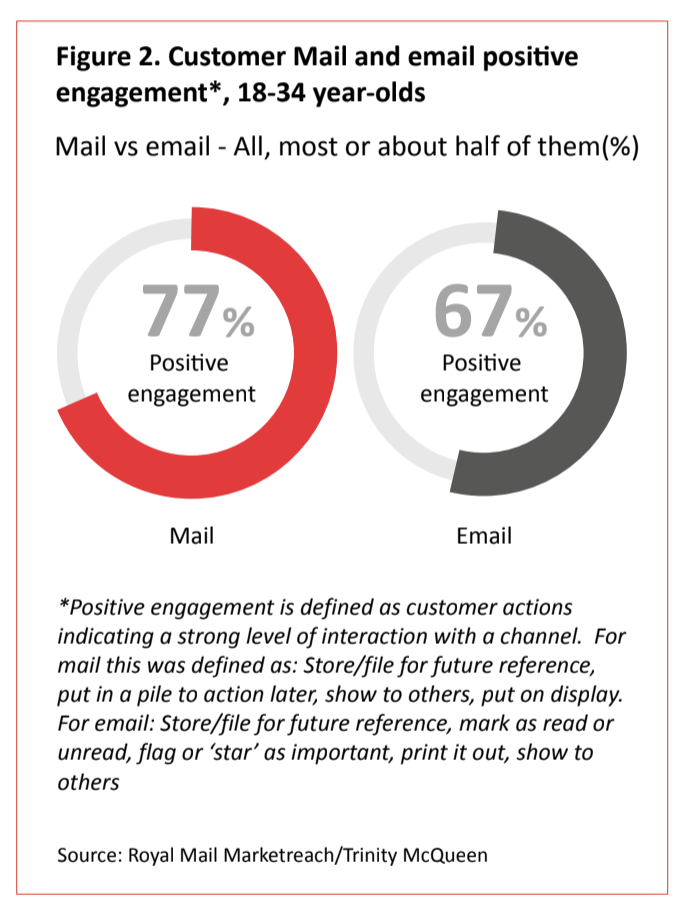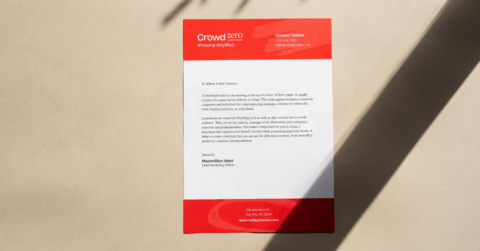![3[1]](https://datagraphic.co.uk/wp-content/uploads/2025/08/31-690x400.png)
Connecting with your customers via email is one of the most important ways to build and develop a long-lasting relationship with your audience. It forms part of a positive customer experience (CX), and if your audience feels unsatisfied with the quality of your customer communication, you could risk losing their loyalty altogether.
In an increasingly focused digital communication world, sending a message through physical media has become increasingly poignant. Now, organisations are focusing on strengthening their communication and CX strategy by incorporating and integrating customer mail into their overall experience.
What is customer mail?
In short, customer mail refers to any form of communication from an organisation to a customer who already has an established relationship with them. It encompasses a wide range of content, including items like invoices, appointment reminders, welcome packs, and general notifications.

Apart from strengthening customer relationships, the primary goal of customer mail is to share vital information and offer support.
Why is customer mail important?
Customer mail is incredibly important because it helps individuals interact with an organisation, encouraging a financial or physical impact. For example, it can be used to send order confirmations, payment notifications, or appointment reminders, which, in turn, reduce customer queries, avoid late payments, and minimise the number of missed commitments.
Integrating physical communications, such as customer mail, also helps improve engagement, drive response rates, and foster brand loyalty.
Customers like the choice. They don’t want to feel they are forced into opting for digital-only communications.
Instead, they would like the option to choose between the two and even combine channels. If you reach out to your customer via their preferred channel, they will be more likely to reply and engage with the message.
Four benefits of customer mail
So, in a digital age, why is physical customer mail—printed and posted to recipients—still so important? Here are four compelling reasons.
1. People engage with mail
You can receive up to hundreds of digital messages a day, whereas the number of daily letters you’ll receive is relatively small.

Therefore, people tend to engage more with mail than digital communication. You probably wouldn’t ignore letters through the post like you do with emails and mobile notifications, so organisations should capitalise on that.
According to a report by Royal Mail and Marketreach, 99% of customer mail is interacted with, from opening it, reading it, to storing it for later.

2. Mail works across age groups
Many organisations assume that digital communication channels are better suited to the younger generation, while customer mail is more effectively received by older age groups.
However, the truth is that physical communication is equally relevant, received, and appreciated across all age groups.
According to the same report, 77% of 18-to 34-year-olds engage with customer mail in a positive manner. In contrast, it’s only 67% for email, which is surprising considering that Gen Z and Millennials spend a significant amount of time on digital devices.

3. Mail is trusted
You can’t create brand equity or build a relationship with customers without trust.
Sending out reputable and high-quality content strengthens your position as a trustworthy organisation. Moreover, consumers perceive mail as one of the most credible forms of communication.
Again, according to the same report, on average, 71% of people who receive customer mail completely trust it and where it’s coming from, with the main sources being hospital appointments, credit card statements and communications, mobile phone bills, and insurance documents.
4. Mail has a commercial impact
It has proven itself to be a highly effective medium for creating a commercial impact. After all, it is the original form of consumer-directed communication.
When customers receive a letter in the post, it prompts them to take action, especially if they are instructed to take further steps or seek more information online.
Customer action in response to receiving mail is driven by the number of people it reaches and the visibility it receives. It is estimated that one million items sent generate 5.4 million opportunities to be seen, leading to five times more opportunities for engagement and sales.

As an organisation, why wouldn’t you want to integrate customer mail into your communications strategy?
Importance of using customer mail and digital communications
Unlike digital communication, which can often be seen as informal, instant, and temporary, customer mail is characterised as formal, long-lasting, and important. Although each has a unique set of attributes and benefits, combining both forms of communication and adopting an omnichannel approach increases the efficiency of the message.
Also known as “phygital”, this latest trend merges the physical with the digital to create a powerful and generally good customer experience. Furthermore, technological advancements, such as voice activation, QR codes, and augmented reality, further underscore the powerful influence of this movement on our society.
Digital and mail should not be perceived as polarising channels of communication. Instead, they should be considered complementary because they work together to evoke a stronger response from the consumer.
For example, a customer who has a pre-existing relationship with your organisation via mail will be more likely to interact with your brand in the future.
Examples of customer mail
Let’s examine some examples that illustrate the benefits of integrating it into your communication strategy.
Government mail
Public sector organisations, such as Stockport MBC, which works with Datagraphic, use email to connect with customers and suppliers. They need to deliver a trustworthy message to their audience and achieve this element of credibility through a physical document.
Providing recipients with a paper document, whether it concerns council tax, bin collections, benefit statements, or parking notices, allows them to take immediate action while also having information they can refer to for future reference if needed.

It’s also easier to read and equally accessible across all age groups.
Brand customer mail
Consumers no longer look for the best product or the ultimate level of service; they yearn for a combination of the two, also known as the optimal customer experience.
Brands can use customer mail to develop a strong relationship with their audience and enhance their reputation or image. A customer receiving brand mail is much more likely to engage with the organisation again if they see an advert or post online.
An example of this is one that I have received recently. You can request a brochure to be sent to you by The White Company, which includes an introductory voucher to use in-store or online. The brochure itself is so well crafted, and there’s an incentive to purchase via the means most convenient for you.
Customer mail design tips
It’s vital that you nail your customer mail, as delivering a poor-quality standard will imply that your message lacks effort and importance. On the other hand, an outstanding design and layout will reinforce your overall brand and encourage your customers to engage and trust your relationship.
Generally speaking, your communication and design style should always align with your brand, embody its values, and deliver a sensory experience. Provide your customers with clear, concise information, free from jargon, and straightforward instructions. It should appear credible and trustworthy while remaining appealing to the reader.

More specifically, you should:
- Sign off with a name to add a personal touch
- Personalise their message to create a more intimate relationship
- Include an easy-to-read section with contact details
- Keep the message visually interesting with bullet points, graphics, and bolding
- Avoid small font and compressed paragraphs
- Avoid overly complex language
- Avoid any irrelevant information
How to measure the success of customer mail
Organisations should perceive customer mail as an investment that enhances their customer experience. Therefore, the return on investment (ROI) should encompass more comprehensive benefits such as deferred costs, customer retention, brand loyalty and recognition.
More often than not, organisations limit their measures of success to narrow metrics such as operational costs and advertising budgets.
However, we recommend measuring its success over the entire life span of customer interactions, from initial reach to conversion and, ultimately, to the impact of commercial action. This can be achieved through metrics such as channel-unique phone numbers, web traffic, and QR codes.
Final thoughts
Given the customer mail’s credibility and tangibility, it continues to set itself apart from just digital communication. However, this is not to say that one should be used in favour of the other. Instead, organisations should strive to adopt an omnichannel experience that combines the best of both worlds.
Datagraphic’s multichannel communication platform, Aceni, enables organisations and their customers to enjoy a well-rounded and overall excellent customer experience, encompassing a wide range of touchpoints and providing a seamless way to communicate information through preferred channels.
You can combine digital messages with customer mail to enhance your brand’s reputation, deliver high-quality content, and encourage commercial impact.
We hope you found this guide to customer mail useful, but if you have any questions, please don’t hesitate to contact us.




